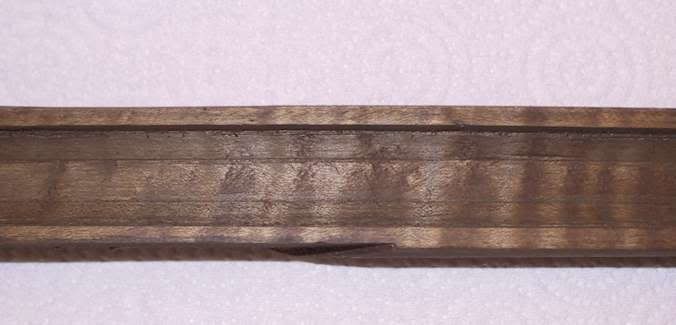By hand with paper towels. It will even dye the curl if you wish. I actually think you might get away just using it to break the wood down so it will take another stain just as well, but I am not sure about that yet. This stock will never be right because of all different things I tried first. I would have to strip the front half down and then use a wood bleach to take some dark deep stains out that were caused by something else I tried.
This is still an experiment. The wife and I were discussing it last night. At the cost of decent replacement wood, I have worked 30 hours to save 75 bucks on a new piece of wood. It is never going to look like the 75$ piece of wood, even if I painted curl into it. I am considering stripping it all the way down, bleaching it, and starting over using just the vinegar this time. Another 10 hours shot down on this project, and that is to get to the start all over again!
I called and discussed wood with a gentleman that builds well known guns that are discussed here pretty often. For right at 200$ he will provide the wood, inlet my barrel, lock, triggers, rough shape the stock, and rough cut the buttplate to match my hardware. That pretty much turns the CVA kit into a whole different beast. Let's call that option number one.
Option number two is ordering a precarve halfstock and doing the inletting myself. Cheap kit gun with nice wood.
Option number three is making up some aquafortis and attempting to make the beech look good with it. Still going to look like beech, but reports here say it will work.
Option number four is the leather dyes right now. Several folks have said that they will dye anything. Only problem there is color control. Several folks have said that mixng them allows you to choose your color and to know exactly what you are going to get. A few bucks on dyes and time. Tung oil to finish. Still beech, but should look good.
Option five is the Vinegar stain. Using it, you have to make the stain, experiment with the mixture until you get the color you want, and it will work. Today I discovered another kind of funny thing about it also. The orange thing that the beech does in strong light still happens. So while it looks like nice walnut sitting here, in strong sunlight, it still does the CVA orange thru the top coat of oil.
All in all, I think my post yesterday is a little premature. Yes, the vinegar will stain the beech, but I am no longer sure it is the best or even the second best way to deal that the problem of the CVA wood. Private message me.









